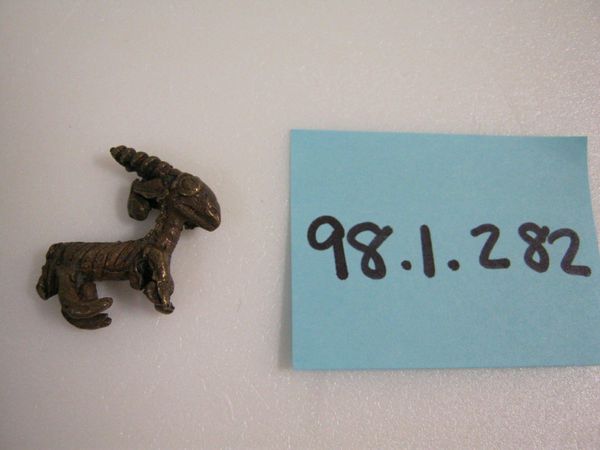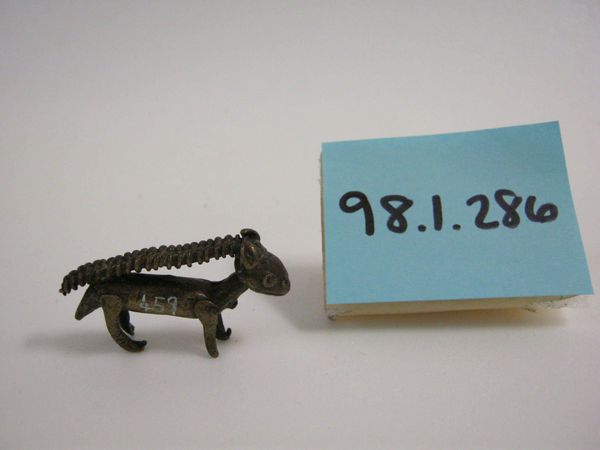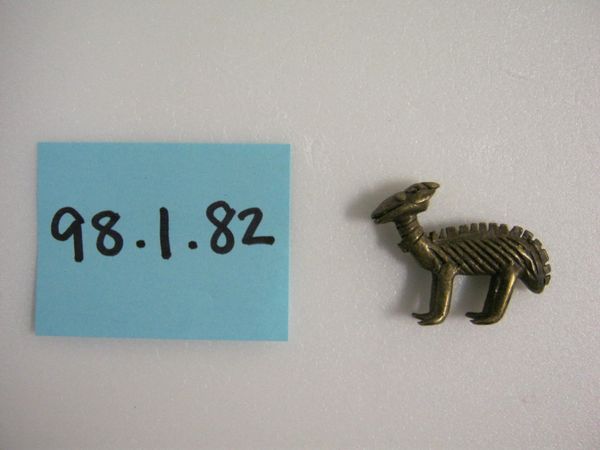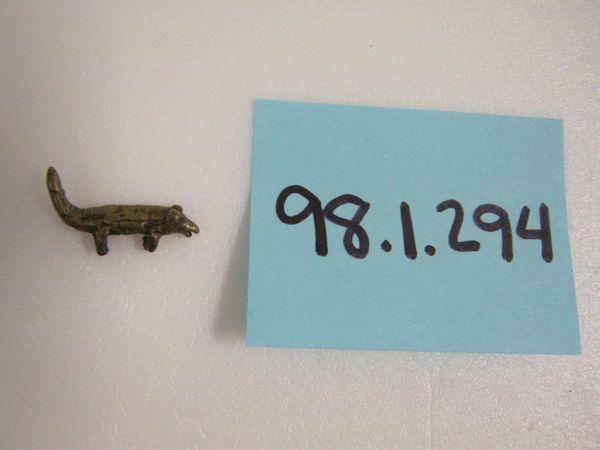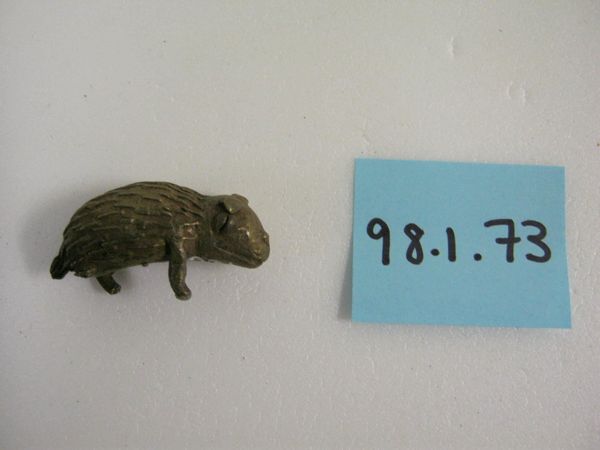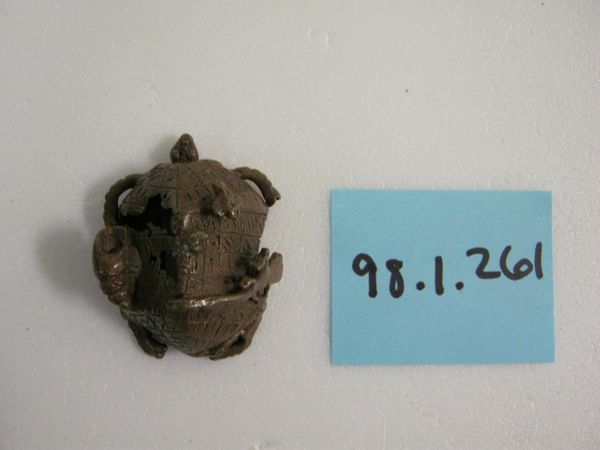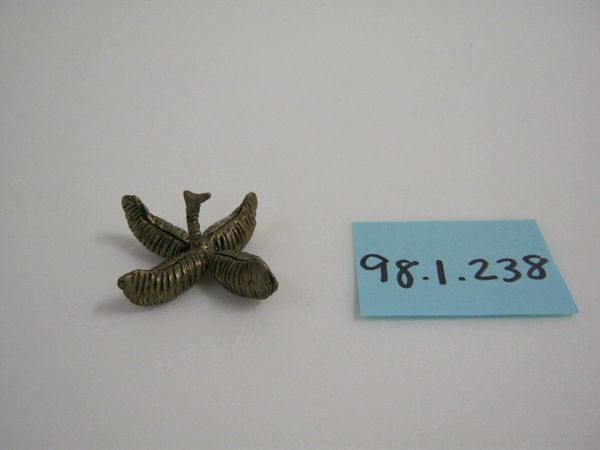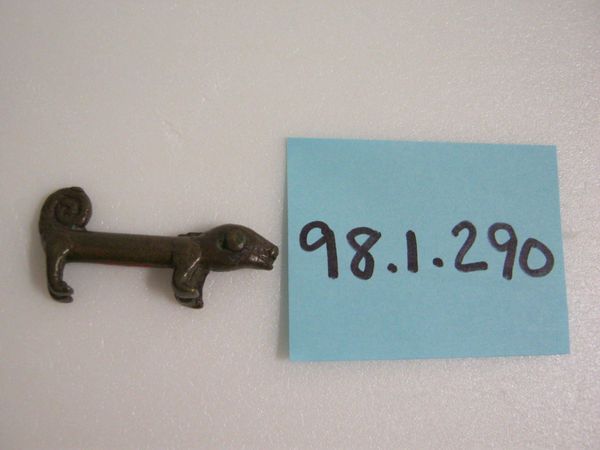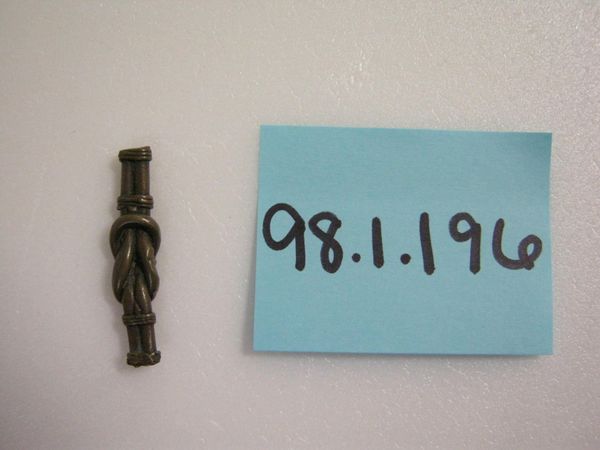![Goldweight [Leopard with Prey] by Akan](/_next/image?url=https%3A%2F%2Fd2w8kbdekdi1gv.cloudfront.net%2FeyJidWNrZXQiOiAiYXJ0ZXJhLWltYWdlcy1idWNrZXQiLCAia2V5IjogImFydHdvcmtzLzg3MTY0YjQ4LTdhN2UtNDAxNy1iNzA2LWVjOGU5NDg2MjU4NC84NzE2NGI0OC03YTdlLTQwMTctYjcwNi1lYzhlOTQ4NjI1ODRfZnVsbC5qcGciLCAiZWRpdHMiOiB7InJlc2l6ZSI6IHsid2lkdGgiOiAxOTIwLCAiaGVpZ2h0IjogMTkyMCwgImZpdCI6ICJpbnNpZGUifX19&w=3840&q=75)
brass, sculpture
#
african-art
#
brass
#
animal
#
figuration
#
sculpture
#
yoruba-art
Dimensions: 7/8 x 5/8 x 1 13/16 in. (2.22 x 1.59 x 4.6 cm)
Copyright: Public Domain
Editor: Here we have a brass goldweight from the Akan people, depicting a leopard with its prey, dating back to the 19th or 20th century. There's a real sense of power and intent conveyed in such a small sculpture. How do you interpret this work and its possible meanings? Curator: I see a convergence of the natural world and Akan cultural values, powerfully encoded in a visual metaphor. Consider the leopard itself – a potent symbol of leadership, agility, and untamed power, especially among the Ashanti. Editor: So, the leopard isn’t just an animal, but a representation of something more? Curator: Exactly. And it's carrying prey. This amplifies the symbolic weight. It might represent authority, success, even proverbially, the spoils of a wise reign or successful endeavor. The act of carrying resonates across many cultures, carrying burdens, carrying responsibility. Do you notice the stylized spiral patterns on its body? Editor: I do, yes. They almost feel like stylized rosettes. Curator: Precisely. These could relate to visual patterns carrying complex, even esoteric, meaning within the culture. They reinforce its significance as more than a simple decorative object. These goldweights served an important purpose, to maintain ethical practice within trade. How might we consider them as instruments of integrity? Editor: That’s really interesting – it shows that even something practical can hold so much deeper meaning. I guess I hadn’t considered the leopard as being so symbolic. Curator: Visual symbols carry generations of cultural memory, informing the present, allowing us to reimagine continuity and tradition. Editor: I’ll definitely look at art differently now, thinking about the layers of meaning hidden within the imagery!
Comments
No comments
Be the first to comment and join the conversation on the ultimate creative platform.
